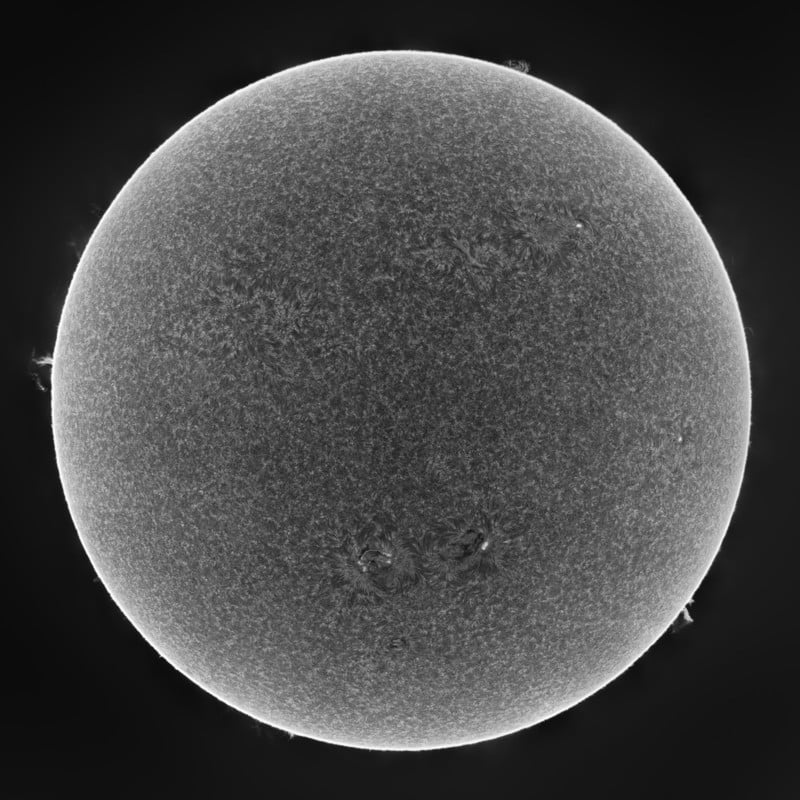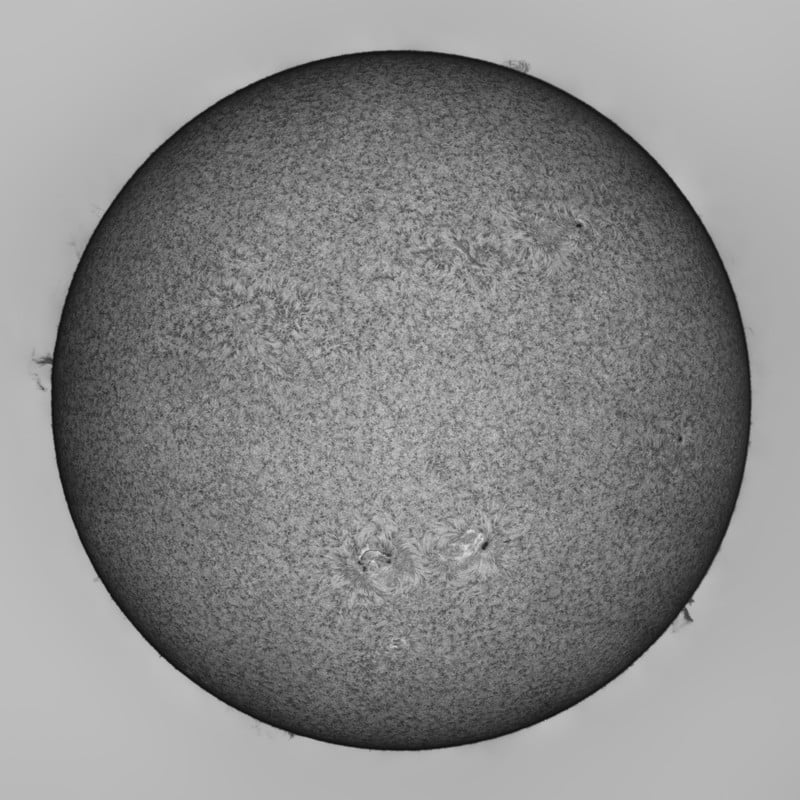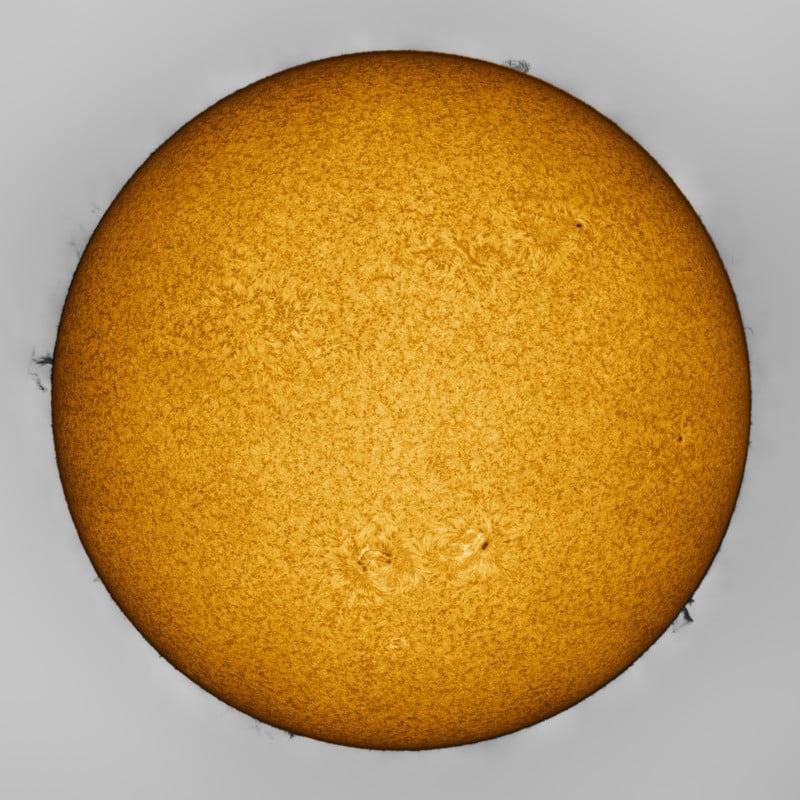A Nearer Look: How I Created a 248MP Photograph of the Solar

A giant ball of sunshine hovers above our heads on a regular basis. It’s all the time there and most of the people take little or no time to note it. Whereas we aren’t suggesting that you just spend time observing it and going blind within the course of, science has allowed us the power to look immediately on the solar within the most secure methods.
As client expertise has develop into extra reasonably priced, the common individual can peer into the a number of layers of the solar utilizing devoted gear that may be bought at any good telescope retailer.
On this article, we can be focusing particularly on a layer referred to as the Chromosphere: an space of the solar that’s seen inside the orange to pink spectrum. Utilizing a specialised filter, this system blocks out all undesirable mild whereas passing the precise bandpass we’re .
![]()
This full-disc picture of our solar is created utilizing a big refracting telescope and a high-speed CMOS monochrome digital camera.
![]()
![]()
![]()
A particular sort of filter referred to as an etalon is used at the side of a blocking filter. Because the layer of the solar is what we wish to observe, the blocking filter is designed to let in mild at 656nm wavelength. On this case, a Daystar Gemini is used which additionally has a 4.2x telecentric Barlow built-in.
![]()
![]()
The digital camera in query is made by QHYCCD, an organization that focuses on making cameras for the astrophotography market. This explicit digital camera, the QHY5III-174M has a smaller sensor in comparison with what we’re used to. At solely 2.35-megapixels, a last picture is constructed of 90 panels to create a mosaic of kinds, making a whole picture of our star.
![]()
Every panel or picture is made up of a high-speed video seize of 1000 frames, which is later stacked collectively to create a extremely detailed picture with smoother gradients and fewer noise.
Because the digital camera has such a small sensor, a monitoring mount was used with the help of a controller to pan throughout the solar, taking captures at numerous steps. Because the solar is definitely in fixed movement, the time taken to seize every panel needs to be underneath a sure time-frame. This sequence took roughly 25 minutes to finish to make sure that the floor didn’t change an excessive amount of when creating the ultimate picture.
Astrophotographers typically make use of a method throughout the preliminary section to kind out what’s sign and what’s noise. The essential thought is that a picture with a whole lot of noise when mixed with different photos from the identical framing, will end in a greater picture.
![]()
As soon as these photos have been stacked, a course of is then utilized which helps sharpen the picture. Utilizing a selected approach referred to as deconvolution, a software program known as IMPPG permits particulars to be pulled again in. That is very similar to the pre-programmed settings present in virtually all DSLR and mirrorless cameras. Astronomy cameras have these pre-processing steps eliminated to permit the consumer extra management over the picture at the price of time spent processing.
Subsequent is the lengthy job of aligning every picture. Whereas there are various software program choices to make this course of sooner or automated, photos comparable to these don’t all the time line up appropriately. Usually, two photos don’t include any particular options for the software program to create alignment factors and fail at creating stitched photos with out some sort of distortion or misalignment.
![]()
After every body has been individually aligned, the pictures are then blended collectively to make a seamless picture. Photoshop Auto-Mix is ready to deal with this explicit job extraordinarily effectively, even when the 2 adjoining frames have completely different various ranges.
![]()
As soon as every panel had been aligned and blended, a number of different methods have been additionally used to boost the main points additional. Making use of HDR Firming, particulars start to come out. The HDR picture is mixed along with the earlier outcome, to make a smoother transition. Various hotspots and darkish patches are additionally eliminated to create a extra uniform picture utilizing the Digital camera Uncooked capabilities inside Photoshop.
![]()


As soon as the ultimate picture is achieved, a false-color is utilized to the picture. Since our solar isn’t really yellow, a curves adjustment is used to present the coloration that most individuals would affiliate with the solar throughout sundown.

The ultimate picture created is a huge 248-megapixel picture that freezes the solar at that second of seize, by no means to be seen once more in the very same manner.
Whereas a smaller telescope can be utilized to create these photos, bigger telescopes have the additional benefit of with the ability to get extra particulars than would with a smaller counterpart. At 1200mm focal size, plus the added 4.2x magnification, the smallest minor particulars develop into monstrously massive. Every function may be the dimensions of the Earth and the bigger ones would swallow Jupiter entire a number of instances over.
![]()
![]()
![]()
![]()
In regards to the writer: Simon Tang is an achieved astrophotographer whose work has been well known, together with by the Royal Observatory in its Astronomy Photographer of the Yr competitors (underneath the identify Siu Fone Tang). Tang often shares his astrophotography photos on his Instagram.